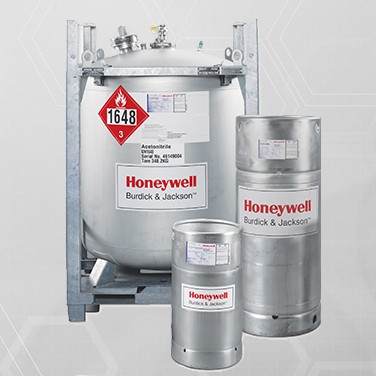Don’t Risk Your Health: Choose Safe Chemical Packaging
Scientists working in labs may encounter toxic, poisonous, carcinogenic, corrosive, or flammable chemicals almost daily. And, even with secure chemical storage, proper handling, and a chemical spill program in place, accidents still happen.
When spills of these chemicals occur, the user may risk direct skin contact or breathe the chemical. Flammable chemicals can burn or explode, causing injuries. Chemical spills are not infrequent and cause more than 11,000 incidents annually.*
Label and Document
Chemicals must be correctly labeled with the chemical name, appropriate hazard warnings, and the name and address of the manufacturer.
The Occupational Safety & Health Administration (OSHA) also requires a detailed Safety Data Sheet (SDS) to be made available for each chemical. These documents are available in English and other languages and include information about the chemical and its physical properties, known health effects, exposure limits, carcinogenic status, precautionary measures, emergency and first-aid procedures, and the company that issued the SDS.
Reduce Exposure
What else can you do to improve safety in your lab and help prevent chemical accidents?
Train lab personnel to appropriately handle chemicals and use appropriate personal protective equipment (PPE) like safety goggles, gloves, and long-sleeved lab coats.
Buying ready-to-use chemical mixtures can also reduce some of the risks of storing, handling, and disposing of hazardous solvents or strong acids and bases.
Honeywell offers many ready-to-use chemical mixtures, like Honeywell LabReady solvent blends and volumetric solutions. Each commercially prepared blend or solution is accompanied by the necessary documentation (label and SDS) to meet health, safety, and environmental regulatory requirements.
Safe Packaging
Analytical chemicals are commonly packaged in glass bottles, which are clean and dependable containers for high-purity chemicals. But glass presents a serious safety hazard when broken. Transport hazardous chemicals in glass bottles using a secondary unbreakable container like a bucket that is large enough to hold the bottle’s contents.
Another option is the Honeywell HandleLock solvent bottle jacket, a convenient secondary container for 4L solvent bottles as recommended by OSHA (29 CFR 1910.1450). The jacket acts as a shock absorber and contains any broken glass and bottle contents, protecting people and property.
Another option is replacing glass bottles for solvents with safer break-resistant packaging. Honeywell high-purity Burdick & Jackson and Chromasolv solvents and LabReady solvent blends are available in glass bottles, stainless-steel cans and drums, or returnable containers. The innovative Stainless-Steel Pressure Dispense System (SSPDS) provides an environmentally responsible way to enhance lab safety and efficiency. Each SSPDS container is a sealed, break-resistant system that reduces employee exposure to chemicals and maintains purity to extend shelf life.
SSPDS containers are constructed from 14-gauge 304 or 316 stainless steel and have hydrostatically tested proof pressures of 900kPa (132psig). They pass DOT/UN Packing Group I drop testing (a container and components with a 566-pound load survives a six-foot drop onto a solid surface) for highly hazardous material in a closed-head steel drum. The SSPDS container also meets OSHA 29 CFR 1910.106 standards for storage of up to 60 gallons (227L) of a flammable or combustible liquid.
The SSPDS is equipped with pressure relief valves to minimize the risk of explosion associated with inadequately or non-vented storage containers exposed to fire. Flash vaporization occurs when fluids are heated above their normal boiling points, and the expanding vapors can explode when venting is insufficient.
Solvents are dispensed from SSPDS containers with rugged and reliable quick-connect couplings. Pressure rated to 150psig, the containers feature an automatic shutoff that allows hose connections and disconnections without manual venting. These quick-connect fittings eliminate leakage, increase safety, and deliver solvents directly and safely to instruments and dispensing stations.
Regulatory advice, training on safe container usage, and convenient round-trip shipping is also offered by Honeywell.
Make laboratory safety your top priority and take advantage of commercially available ready-to-use solvent blends, premixed volumetric solutions, or buffers that reduce chemical storage, handling, and disposal exposure risks. And consider replacing breakable glass bottles with safer break-resistant stainless-steel containers like SSPDS that enhance lab safety and efficiency and are environmentally friendly.
Honeywell has been an innovator in analytical chemistry for more than 200 years. We continue to evolve and offer high-quality products that enhance safety while increasing laboratory efficiency.
*Based on an incident rate of two per 10,000 full-time workers in private industry, with exposure requiring days away from work. (REFERENCE: U.S. Department of Labor 2012 Report on Nonfatal Occupational Injuries and Illnesses)




